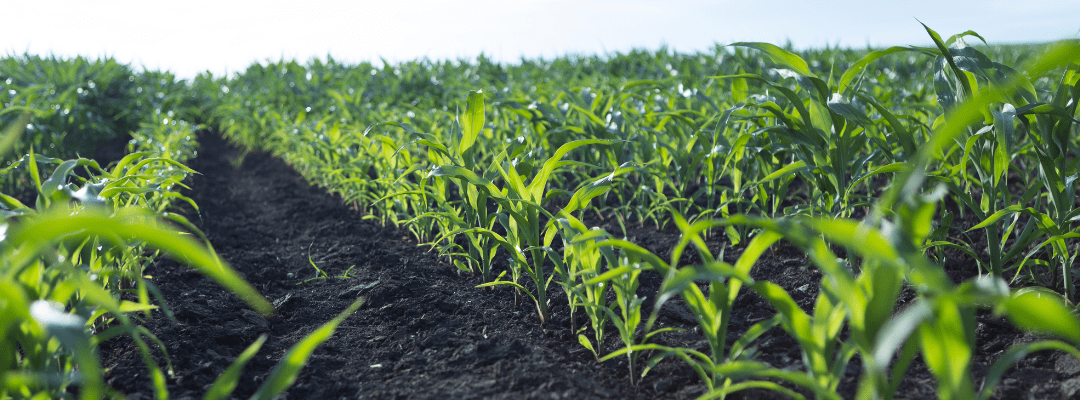Earlier this year, we started a new series on our blog to cover the stages in the crop production lifecycle. After highlight research and development, we dug into the practice of seed breeding. In this blog post, learn more about key strategies for optimizing seed production.
If you head over to your favorite search engine and type ask for resources related to the best seed production processes, it’ll highlight many of the steps fundamental to growing plants with a goal of harvesting seeds that can then be sold as a product to growers for generating crop yields.
As we know with anything in agriculture, variability comes standard – and for organizations that are in the business of selling seed, this variability can have a distinct impact on the bottom line. Without knowing which weather events may occur in the coming season, how can you account for risk? If there’s no insight into how conditions may result in pest or disease damage, what does this mean for your resulting yields – or the quantity of the product you sell?
Like with any manufacturing facility, being able to manage quality serves as imperative to success.
However, when it comes to seed production fields – or what many like to call open-field manufacturing facilities – there are often limiting factors to understanding variables and impact on quality.
But, that’s where technology – particularly remote sensing – can help optimize the production of seeds for seed manufacturers.
Getting Accurate, Reliable Data
Remote sensing unlocks a number of benefits, but among the most celebrated – particularly for measuring the quality and success for the production of seeds – is the ability to generate accurate, reliable data to help inform key decisions.
The benefits of using an ag drone system goes beyond being able to cover a high number of acreage in a short amount of time. While this is beneficial from a resourcing perspective, this simple serves as a step that unlocks the true value.
And that comes from having a tool that can capture this data in a methodical, repeatable process so that you can generate accurate and reliable data.
While it starts with the ability to capture imagery, from an RGB mosaic to show a picture of the field or a multispectral index with insight into plant health. This imagery, using a solution like Sentera’s data science ecosystem, can then be translated into detailed analytics to generate insights.
Interested in uncovering emergence early in the season? Check. Need to know how male and female plants are performing within the same field? It can be done. Ready to see where certain areas may need irrigation or key inputs, based on recent weather conditions? Let’s do it.
Standardizing Data Across Regions
The methodical, repeatable process that drone technology offers to ag data collection offers more than an accurate and reliable data set.
It also means that data sets can be standardized across regions, whether it is within the U.S. Corn Belt or if it is across global field locations.
What does this mean? It means that data can be compared like apples to apples (or in our case… maybe corn cob to corn cob?). There’s no variance in how different people may perceive a measurement or a count; the sensor will capture what it does no matter the location.
(Side note: You may be wondering: Okay, but there will be variance in weather conditions. What about clouds? Or changes in light? Sensors can accommodate for that, with the help of radiometric calibration.)
Now with a clear view of what’s happening from field to field, it makes it easier to inform forecasting decisions and help inform the supply chain. This level of visibility means you can clearly understand what you expect to see at the end of the season, and revise the forecast based on what quality challenges that the open-air manufacturing facility may face throughout the season ahead.
Ag Modeling Uncovers Key Outcomes
When it comes to managing the production of seeds, the unknown results in risk and uncertainty.
Is there a way to remove this from the process?
It may not be able to be eliminated completely – after all, variability comes from several different elements (many of which, like weather, cannot be controlled). But, there are opportunities to manage it better.
Like we talked about, getting visibility into crop health and performance throughout the season can help indicate any quality issues that may arise due to weather events or issues from input management.
Perhaps one of the best ways to dig deeper into this data comes from agronomic modeling – or the ability to use predictive tools to deliver deeper insight into crop performance. Modeling uses several data variables to tun and train a model that can provide deep insight into key agronomic drivers that impact outcomes the most.
For seed production, understanding Yield & Qualit, for instance, can help forecast end-of-season yield outcomes. What’s more, leveraging the accurate and standardized data from ag drone data capture can help inform the model.
The result? Actionable insight to help optimize the production of seeds – and better inform forecasting and overall decisions throughout the product pipeline.
The Future of Data for Seed Production
Much like traditional manufacturing facilities have experienced, digging into the data is imperative to understand what’s impacting quality and outcomes. But, for agriculture, this has been easier said than done because of the complexity of the production of seeds.
While the biological process itself lends itself to complexity, many of the challenges comes from the site-specific variability of the production of seeds – as well as the unpredictability of the season. (Often times, the only predictable element about the growing season is that there will be unpredictability!)
Using technology to capture data, while leveraging key advancements in machine learning, can help augment seed production processes and optimize operations – which can deliver clarity for forecasting methods and better inform supply chains. And, at the end of the day, that helps drive profitability – an essential focus for seed production operations.

